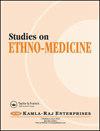西喜马拉雅北阿坎德邦Jaad Bhotiya群落中各种植物的民族药用价值
Q2 Social Sciences
引用次数: 7
摘要
Bhagirathi山谷的Jaad Bhotiya部落社区以其在北阿坎德邦的超度活动而闻名。本文是一项初步调查的结果,旨在了解Jaad人的传统保健做法和各种补救措施中植物物种的使用。共有39种植物被记录用于传统医学,这表明土著知识体系仍然有效地为Jaad社区的福祉服务。然而,这些知识仅限于老一辈,而年轻人仍然被剥夺了这些知识。研究还发现,由于气候变化的影响和人为因素的不断增加,该地区的药用植物种类比以前少。目前的利用模式和有限的知识转让正在贬低该区域植物资源的可持续性和土著系统对人类福祉的影响。*通信地址:E-mail: kusumdoon@gmail.com介绍传统知识系统在全球土著社区中是独一无二的。在所有这些知识体系中,植物和动物在传统医学中的使用非常吸引人,因为在不同的民族社区中是不同的(Uniyal和Shiva 2005)。根据世界卫生组织(卫生组织,2002年)的资料,大约80%的世界人口依靠土著医药。农村和偏远丘陵地区的人口比其他人更依赖传统医学系统,特别是基于植物资源的传统医学系统(Dhar et al. 2002),用于预防、诊断和治疗各种身心疾病。然而,这些做法在部落社区中非常普遍,特别是在印度,超过5300万部落人口属于227个种族群体的550个社区(nautial等人,2000;Phondani et al. 2009)。印度喜马拉雅地区(IHR)居住着超过175个时间表部落,约占印度部落总人口的18.5% (Negi和Kandari 2017)。北阿坎德邦的部落社区,如Bhotiya、Jaunsari、Tharu、Raji、Buxas等,拥有独特的社会文化遗产、语言和TKS的生活和生计,在他们的生存中发挥着重要作用(Samal和Dhyani 2010;Negi and Kandari 2017;Nautiyal 2017)。这些社区在很大程度上依赖森林和其他基于TKS的自然资源来维持生计,包括食物、饲料、药品和其他生计选择(Maikhuri等人,2000;卡拉2005;Bhatt et al. 2013)。然而,基于植物和动物资源的传统保健做法丰富了他们的土著身份。随着时间的推移,土著知识系统的文献记录不足,以及向年轻一代的转移或移交有限,引起了科学家和政策制定者对其保护的关注(Samal和Dhyani 2010)。因此,记录药用植物的民族植物学和民族动物学知识对于保存古代知识体系至关重要(Kala 2005;Sharma and Lal 2005;Rana and Samant 2011;Bhatt et al. 2013;Negi和Kandari 2017),并启动这些宝贵生物资源的保护和管理规划(Dhar等人,2002;Muthu et al. 2006)目前的研究是在Uttarkashi地区的Jaad Bhotiya部落进行的,该部落以其在Terai, Shivalik和北阿坎德邦的喜马拉雅高原之间的迁移实践而闻名。Jaad社区拥有丰富多样的知识,特别是关于当地可用植物物种的使用,然而,与UtEthno Med的其他部落相比,文献记录很少,12(3):189-197 (2018)DOI: 10.319001 /24566772.2018/12.03.558 2018©Kamla-Raj 2018 190 KHIMA NAND BALODI, MONIKA VATS purrohit, VIJAY SHRIDHAR和KUSUM **AM tarakhand Himalaya。本文是对北阿坎德邦部落社区TKS的现有知识和保护印度喜马拉雅地区具有民族药用意义的植物资源的信息的贡献。本文章由计算机程序翻译,如有差异,请以英文原文为准。
Ethno-Medicinal Uses of Various Plants Species among the Jaad Bhotiya Community of Uttarakhand, Western Himalaya
The Jaad Bhotiya tribal community of Bhagirathi valley is known for their transhumance practices in Uttarakhand. The present paper is the result of a preliminary investigation, which was conducted to understand the traditional healthcare practices and use of plant species in various remedies by the Jaad people. A total 39 plant species are documented to be used in traditional medicine which revealed that the indigenous knowledge system still serves effectively for the well-being of the Jaad community. However, the knowledge was limited to older generation while the younger ones remain deprived of such knowledge. It was also found that various medicinal plants species are less abundant than earlier in the region which is believed due to the ever-increasing anthropogenic drivers and impacts of climate change. The current utilization pattern and limited transfer of knowledge are disparaging to the sustainability of plant resource in the region and indigenous system for human well-being. *Address for correspondence: E-mail: kusumdoon@gmail.com INTRODUCTION Traditional Knowledge System (TKS) is unique among the indigenous communities across the globe. Use of flora and fauna in traditional medicine has been much fascinating among all these knowledge systems, as are distinct in different ethnic communities (Uniyal and Shiva 2005). As per the World Health Organization (WHO 2002), about eighty percent of the world population depends on indigenous medicine. The population in rural and remote hilly terrains are more dependent than others on traditional medicine systems especially based on plant resources (Dhar et al. 2002), used for prevention, diagnosis, and treatment of various physical and mental ailments. However, these practices are much prevalent among tribal communities, especially in India where over 53 million tribal people belong to about 550 communities of 227 ethnic groups (Nautiyal et al. 2000; Phondani et al. 2009). The Indian Himalayan Region (IHR) is inhabited by more than 175 schedule tribes with about 18.5 percent of the total tribal population of India (Negi and Kandari 2017). The tribal communities of Uttarakhand such as Bhotiya, Jaunsari, Tharu, Raji, Buxas, and others, having unique socio-cultural heritage, languages, and TKS of life and livelihood, play an important role in their survival (Samal and Dhyani 2010; Negi and Kandari 2017; Nautiyal 2017). These communities largely depend on forests and other natural resources based TKS for their sustenance including food, fodder, medicine and other livelihood options (Maikhuri et al. 2000; Kala 2005; Bhatt et al. 2013). However, traditional healthcare practices based on plant and animal resources have enriched their indigenous identity. Over the time, inadequate documentation of indigenous knowledge system and limited transfer or handing it over to the younger generations has drawn the attention of scientist and policymakers toward its preservation (Samal and Dhyani 2010). Thus, documentation of ethnobotanical and ethno-zoological knowledge on medicinal plants is utmost important to preserve the ancient knowledge system (Kala 2005; Sharma and Lal 2005; Rana and Samant 2011; Bhatt et al. 2013; Negi and Kandari 2017) and to initiate the conservation and management planning for these valuable biological resources (Dhar et al. 2002; Muthu et al. 2006) The present study was conducted on the Jaad Bhotiya tribe of Uttarkashi district, known for their transhumance practices between Terai, Shivalik and higher Himalaya of Uttarakhand state. The Jaad community holds a diverse wealth of knowledge especially on the use of locally available plant species, however, poorly documented in comparison to the other tribes of UtEthno Med, 12(3): 189-197 (2018) DOI: 10.31901/24566772.2018/12.03.558 2018 © Kamla-Raj 2018 190 KHIMA NAND BALODI, MONIKA VATS PUROHIT, VIJAY SHRIDHAR AND KUSUM ARUNACHALAM tarakhand Himalaya. This paper is a contribution to available knowledge on TKS of tribal communities of Uttarakhand and information to conserve plant resources of ethno-medicinal significance in the Indian Himalayan Region.
求助全文
通过发布文献求助,成功后即可免费获取论文全文。
去求助
来源期刊

Studies on Ethno-Medicine
Social Sciences-Cultural Studies
CiteScore
0.50
自引率
0.00%
发文量
13
期刊介绍:
Studies on Ethno-Medicine is a peer reviewed, internationally circulated journal. It publishes reports of original research, theoretical articles, timely reviews, brief communications, book reviews and other publications in the interdisciplinary field of ethno-medicine. The journal serves as a forum for physical, social and life scientists as well as for health professionals. The transdisciplinary areas covered by this journal include, but are not limited to, Physical Sciences, Anthropology, Sociology, Geography, Life Sciences, Environmental Sciences, Botany, Agriculture, Home Science, Zoology, Genetics, Biology, Medical Sciences, Public Health, Demography and Epidemiology. The journal publishes basic, applied and methodologically oriented research from all such areas. The journal is committed to prompt review, and priority publication is given to manuscripts with novel or timely findings, and to manuscript of unusual interest. Further, the manuscripts are categorised under three types, namely - Regular articles, Short Communications and Reviews. The researchers are invited to submit original papers in English (papers published elsewhere or under consideration elsewhere shall not be considered).
 求助内容:
求助内容: 应助结果提醒方式:
应助结果提醒方式:


